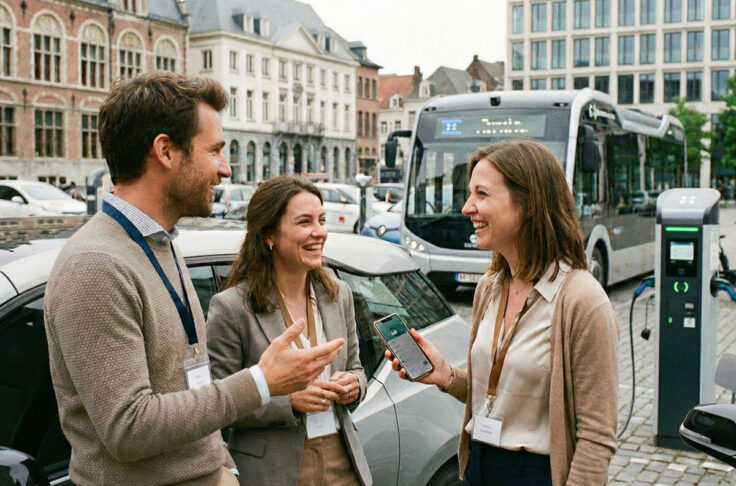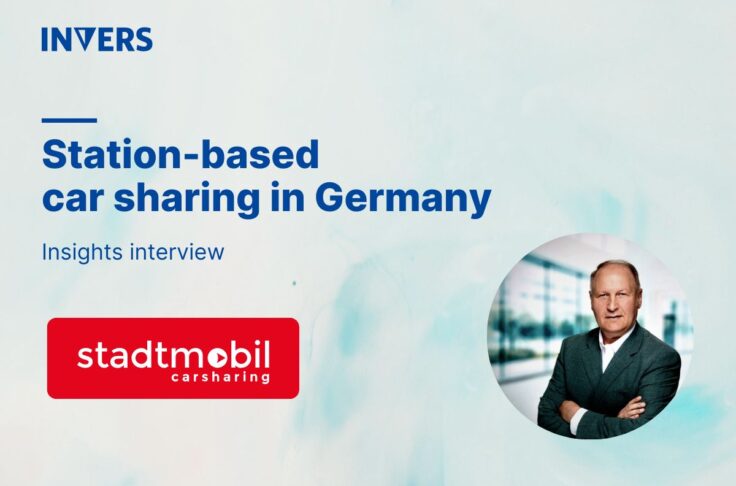Reliable Connectivity: Avoid The Rental that Never Happened
Summary
Reliable connectivity is a key part in ensuring the long-term viability of a shared mobility service. The shared mobility industry can learn lessons from the auto manufacturers who understand what parts they need to develop in-house and what parts they can buy from suppliers to get the best and most reliable products efficiently.

Reliability plays a center stage role in most, if not all businesses, and shared mobility is no different. ‘The rental that never happened’ is every shared mobility provider’s nightmare. There are many reasons for a rental to fail to start, but they all translate to unreliability to potential clients. Clients won’t return to a service they can’t trust to be available when and where they need it. This is especially important as far as shifting default habits and choices from private vehicles to shared vehicle alternatives.
Shared mobility operators should not underestimate how important reliable connectivity is to running their services. Operators should prioritize their assets and resources to ensure service reliability, while at the same time have enough capacity for differentiation and focus on what really matters: the customer experience.
The rental that never happened
As mentioned above, the worst thing that can happen for a client is not being able to start the rental of a shared vehicle. This could be due to many reasons: the location of the vehicle may be too inaccurate for the user to find the vehicle; the vehicle’s connectivity solution might be down and unable to send/receive data meaning the vehicle can’t respond to the user’s app request to start the rental; or the connectivity hardware may simply be too slow to respond, frustrating the user to the point they leave before the trip starts. These situations cause inconvenience and frustration to users and impact their decision to use shared mobility on future trips.
Reliable connectivity for uninterrupted data flow
Shared mobility needs reliable connectivity not only to leave clients happy, but also to supply all data needed for operations. A basic or badly designed telematics connectivity architecture can allow data gaps when trips leave cellular coverage, for example. It can also stop pushing data when vehicles are turned off and locked. Operators are then uncertain of the battery charge level of their EVs, and unaware when their vehicles are stolen or towed. Finally, reliable connectivity solutions for shared mobility should send data frequently enough for operators to track driving behavior, and know the exact locations and speeds of moving vehicles.
What we can learn from the auto industry
We can take a page from auto makers and apply their experience and best practices to the shared mobility space. Auto manufacturers have a very clear understanding of which parts they need to develop in-house and which they can buy from suppliers to get the best and most reliable product. As a result, there are usually many suppliers involved in auto manufacturing, making the process quite complex. Despite this complexity, they’ve figured out how to design their supply chain to address their manufacturing needs, and make all the different components and suppliers involved work together efficiently.
Similar to auto manufacturing, running a successful shared mobility business is also a matter of putting together numerous “components” together, both physical (e.g. the vehicle) and digital (e.g. connectivity and sharing software).
To build or buy, that is the question
The shared mobility industry is starting to learn that not all “components” of its operations need to be developed in-house. Since speed to market is important, you don’t have to start from scratch. The decision to build or buy telematics and software components is critical to the reliability of shared mobility services. Operators should identify parts that differentiate their services, and ones that are mission-critical but not meant to “wow” their clients.
Things that can “wow” customers include:
- A strong vehicle and trip experience
- Easy-to-use booking apps
- Customized pricing and offers tailored to clients
The mission-critical basics include:
- Driver’s license verification
- Payment processes
- Fleet data management software
- Telematics connectivity systems
These basics are important, but don’t differentiate one shared mobility service from another. As a result, it may make sense to choose a proven third-party to outsource these components to. This will free up in-house developers to innovate the core business and create unique customer experiences that “wow.”
Don’t forget that your developers arrange your supply chain and make sure outsourced and in-house components work together. They can either be part of your operating team if you build your sharing software in-house, or they can be from your software or telematics partner to support you in managing your supply chain.
Reliable connectivity in shared mobility
What does reliability look like in action? Here are a few examples from the shared mobility space:
Bounce, the first moped sharing service that entered India, originally had trouble with their in-house tech stack. Once they analyzed where to focus their efforts, Bounce shifted to the INVERS telematics connectivity and fleet data management solution. This freed up their developers to further enhance their user experience, build and launch their own electric moped, and ultimately foster a larger user base, more trips, and business growth.
SHARE NOW, a carsharing joint venture between major OEMs Daimler and BMW, wanted to grow their client base by offering a wider range of vehicles at different price points. SHARE NOW chose INVERS to help connect and integrate Fiat 500s into their fleet using CloudBoxx telematics and connectivity solutions. As a result, SHARE NOW clients have a greater diversity of vehicles available for use.
MILES, a German-based carsharing service, offers a unique pricing structure to their clients. Instead of the standard per-minute billing, they offer pricing by the mile. MILES also wanted to further differentiate themselves through a better user experience. They opted to develop their sharing software and booking app in-house and left the vehicle telematics and connectivity details to INVERS. MILES was then able to upgrade their client experience, break even in 2020, and add EVs to their fleet.
In a nutshell
Shared mobility operators need to decide whether to build or buy – at the right time and with the right partners. Outsourcing the right components of their tech stack to proven suppliers will let them focus on developing the core competencies that set them apart from competitors. This approach ensures that reliable connectivity is not compromised, but even enhanced. Thanks to economies of scale, a third-party supplier can offer high-quality solutions at lower prices. The supplier takes on the burden of continuous maintenance and innovation, while reducing the shared mobility operator’s business complexity.


